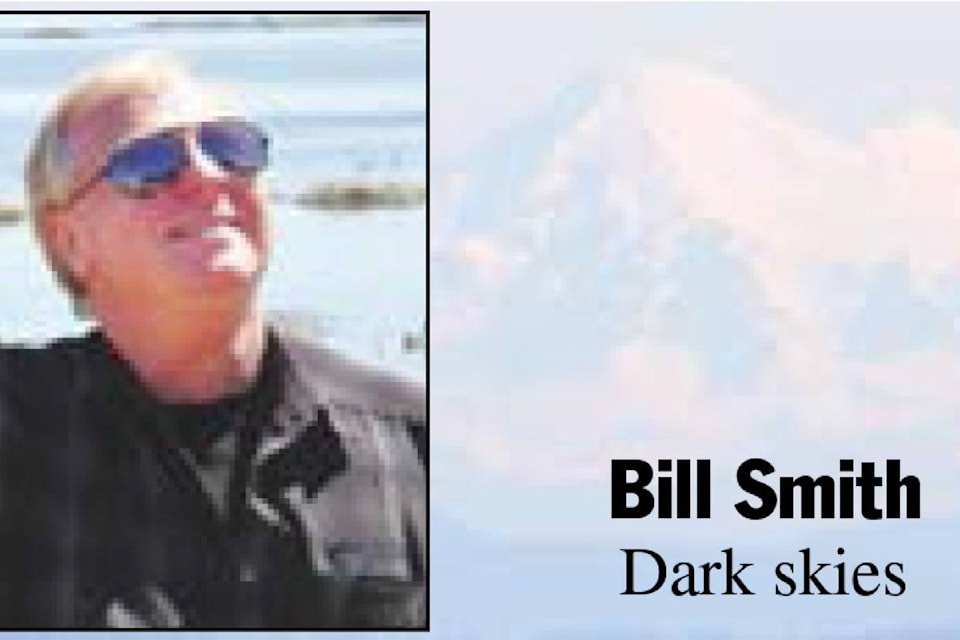What’s Up March 2018 ? Both Venus and Mercury play the part of “evening stars” this month. At the beginning of the month they appear low on the western horizon over the Sooke Hills.
The moon itself joins the pair from March 18 through 20. The moon skims by the Pleiades star cluster and Taurus’s bright red star Aldebaran on the next few evenings, March 21 through 23.
Jupiter, king of the planets, rises over Mount Baker just before midnight this month, and earlier by month end. Even through the smallest telescope or average binoculars, you should see the four Galilean moons, Europa, Io, Callisto and Ganymede.
The March morning sky offers dazzling views of Mars and Saturn all month long. Through a telescope, you can almost make out some of the surface features on Mars. Look a little farther into Mars’ future and circle May 5 with a red marker. When NASA’s InSight spacecraft launches for its six month journey to the red planet, Mars will be easily visible to your unaided eye. Keep watching Mars as it travels closer to Earth.
It will be closest in late July, when the red planet will appear larger in apparent diameter than it has since 2003.
You are in for a real treat if you can get away to a dark sky location (like Cattle Point Star Park) on a moonless night this month — the Zodiacal Light and the Milky Way intersect. The Zodiacal light is a faint triangular glow seen from a dark sky just after sunset in the spring or just before sunrise in the fall.
The more familiar Milky Way is one of the spiral arms of our galaxy. What we’re seeing with the Zodiacal light, is sunlight reflecting off dust grains that circle the Sun in the inner solar system. These dust grains journey across our sky in the ecliptic, the same plane as the moon and the planets, what we call here in the Salish Sea Bioregion the “Salish Walk of the Planets”.
Summary is from the transcript of “What’s Up in March 2018” by NASA announcer and astronomer Jane Houston Jones with specific permission for localization to Cattle Point Dark Sky Urban Star Park and the Oak Bay News. You can subscribe to her weekly blog at solarsystem.nasa.gov/news/category/10things.
